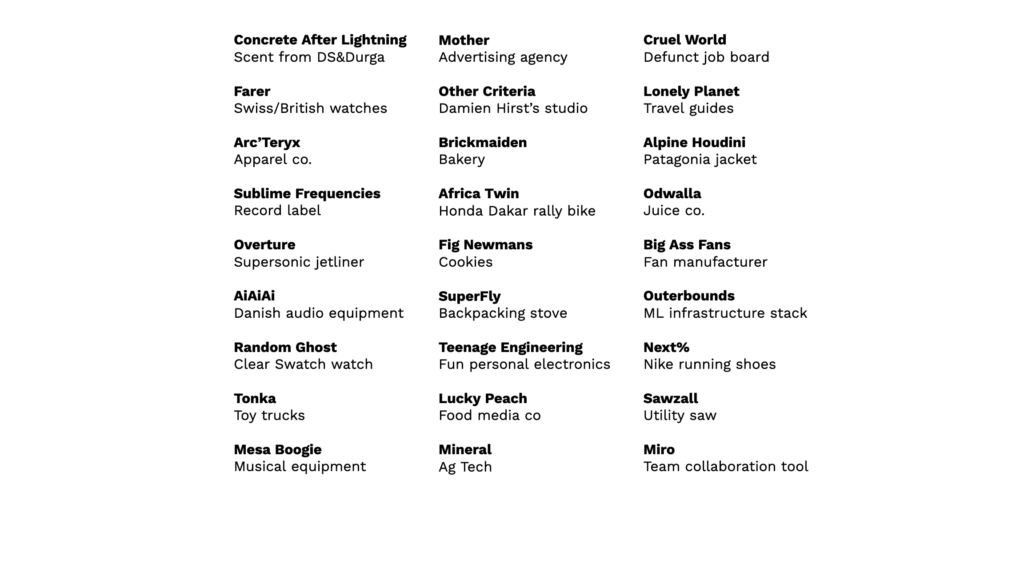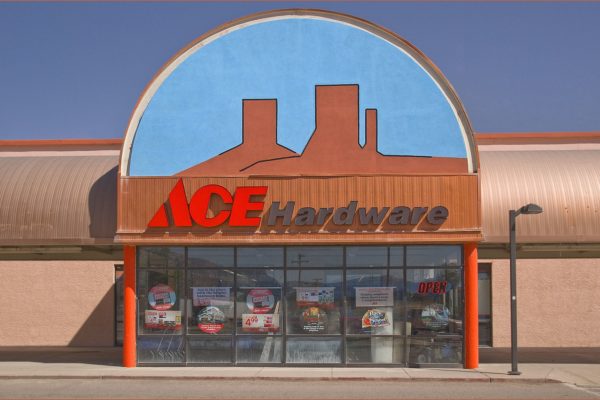Is your name carrying its weight?

Here’s how to tell if your name is doing all it can for you. Also, if you decide to change your name, we’ll discuss the best time to do it.
One: Start with the business side of things. Are you clear on your core business offerings, how you’re different, and how you’re positioned against the competition? If so, proceed to step two.
If not, hold up. Start that work. Naming a business before the business side of things is clear is a lot like picking out a box before you pick out the gift that goes inside.
Two: If you’re clear on core offerings, what signal or signals is your name sending? When someone hears your name and “gets it,” what’s the payoff? How does it help you tell a story about who you are, how you’re different, how you fit into people’s lives? Even if you think the payoff is decent, challenge yourself to consider how more mystery, emotion, jargon, humor, or oddity might get the right response.
People are inundated with brands all day, every day. Are you just another speed bump in their day or are you grabbing their attention?
Exercise: Look at a bunch of great brand names. Here’s 27.

Is your name working as hard as these examples? Yes? Great, no need to keep reading. See you later and have fun. If not, proceed (unless you’re in the rare situation where your name and brand don’t matter—like some niche B2B circumstances where the offering sells itself).
Three: It’s time to change your name. Here’s what that looks like depending on where you’re at in your funding and launch journey.
Factors we’ll be considering:
- Likelihood you’ll pivot significantly and rename again. A good name should fly at a high enough altitude to survive pivots and growth, but a major pivot can require a name change.
- Internal friction: how many people need to be involved and approve a name change?
- Change costs: how much time and money is spent changing the visual identity, website, signage, physical goods, packaging?
- Fees: if you’re hiring an agency, how do their fees stack up relative to your annual budget?
Pre-seed: The likelihood you pivot (and pivot again) can be reasonably high. You’ll encounter the lowest friction and lowest change costs at this stage. This’ll only get harder as you mature. Agency fees may be high relative to budget. A fine time to rename, just know you might do it again if you make a major change to your offerings.
Seed: Pivot risk is still real. You should have relatively low friction and low change costs. Agency fees should be moderate relative to budget. Seed stage is a good time to rename.
Series A: While a pivot is unlikely, you may encounter some amount of friction internally. At this stage, not everyone can be involved (nor should they be). Change costs can start to mount. Agency fees will be modest relative to budget. A name change here can be now or never. You’ll likely have some traction and customers, and a name change can be disruptive and confusing. That being said, if a new name is needed, do it now.
Series B-D: Changing your core business at this stage is unlikely. Internal friction starts to increase as investors, boards, mentors, and team members tend to want to get involved. Change costs can start to balloon as well. Agency fees shouldn’t be much of a factor. Proceed with caution here. You probably should have changed your name a while ago, however it’s not always up to you. Factors that might force your hand are key product failures, legal (™) challenges, an acquisition or merger, or a major pivot.
Post IPO: Major changes to core offerings is unlikely here. Friction and change costs will be somewhere between high and insurmountable. Agency fees are a non-factor. High caution here. Much like renaming before an IPO, you should have changed your name years ago. Again, the same factors may force your hand here: key product failures, legal (™) challenges, an acquisition or merger, or a major pivot.
Four: Ok, so I’m changing my name. How do I do that?
Your team (Internal):
Do you have some creative firepower on the team? Great. Here’s how we’ve seen that pan out.
- Goes well: get buy-in from the top, limit decision making to a small group of key people, work towards objectives (remove subjectivity), work iteratively, limit the number of options being reviewed, pre-screen names with an attorney as you go, bring in designers early to see how the name and brand comes to life, don’t look for perfection (it doesn’t exist).
- Goes poorly (most of these are the opposites of the above items and one of these is enough for derailment): no buy-in from the top, too many decision makers and people involved who don’t have a vote or veto, no clear objectives for the process, random stabs in the dark, too many options being considered, waiting to screen for ™ issues until the last minute, no design support, looking for perfection, and familiarity bias with the old or placeholder name.
Here are some inexpensive resources we’ve developed to grease the wheels: Don’t Call It That, Go Name Yourself, and our Taxonomy of Species.

Someone else’s team (external):
Hire someone. Lots of people are in the naming business.
Here’s what we look for in clients: they know they want to work with us. They’re serious about the project and they’ve seen our work and know we’re the right fit. They see us as a partner, not a vendor. Their hearts and minds are open. There’s a point person on their end who is our voice and advocate within their organization. They’re not looking for perfection. They understand trademark and practical constraints. They’re ready to jettison the old or placeholder name.
Here’s what you should look for in an agency (mirror image of above): Great work that you’d want for yourself. A true partner who, temporarily, becomes a part of your team. A team that challenges you and wants what’s best for you. A point person who is your advocate and voice. Direct access to the people doing the work.
So, if your name isn’t doing a lot of heavy lifting, it’s time to find a new one. You’ll avoid spending a ton of time and money making a bad-to-mediocre name stand out and it’ll be a whole lot easier if that work starts now, before you’ve got to thread the needle with board approvals and pay for all new business cards—or whatever people are using these days.

